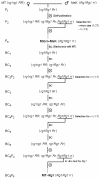The Rg1 allele as a valuable tool for genetic transformation of the tomato 'Micro-Tom' model system
- PMID: 20929550
- PMCID: PMC2958934
- DOI: 10.1186/1746-4811-6-23
The Rg1 allele as a valuable tool for genetic transformation of the tomato 'Micro-Tom' model system
Abstract
Background: The cultivar Micro-Tom (MT) is regarded as a model system for tomato genetics due to its short life cycle and miniature size. However, efforts to improve tomato genetic transformation have led to protocols dependent on the costly hormone zeatin, combined with an excessive number of steps.
Results: Here we report the development of a MT near-isogenic genotype harboring the allele Rg1 (MT-Rg1), which greatly improves tomato in vitro regeneration. Regeneration was further improved in MT by including a two-day incubation of cotyledonary explants onto medium containing 0.4 μM 1-naphthaleneacetic acid (NAA) before cytokinin treatment. Both strategies allowed the use of 5 μM 6-benzylaminopurine (BAP), a cytokinin 100 times less expensive than zeatin. The use of MT-Rg1 and NAA pre-incubation, followed by BAP regeneration, resulted in high transformation frequencies (near 40%), in a shorter protocol with fewer steps, spanning approximately 40 days from Agrobacterium infection to transgenic plant acclimatization.
Conclusions: The genetic resource and the protocol presented here represent invaluable tools for routine gene expression manipulation and high throughput functional genomics by insertional mutagenesis in tomato.
Figures





References
-
- Meissner R, Jacobson Y, Melamed S, Levyatuv S, Shalev G, Ashri A, Elkind Y, Levy A. A new model system for tomato genetics. Plant J. 1997;12:1465–1472. doi: 10.1046/j.1365-313x.1997.12061465.x. - DOI
-
- Watanabe S, Mizoguchi T, Aoki K, Kubo K, Mori H, Imanishi S, Yamazaki Y, Shibata D, Ezura H. Ethylmethanesulfonate (EMS) mutagenesis of Solanum lycopersicon cv. Micro-Tom for large-scale mutant screens. Plant Biotechnol. 2007;24:33–38.
-
- Pino-Nunes LE, Figueira AVO, Tulmann Neto A, Zsögön A, Piotto FA, Silva JA, Bernardi WF, Peres LEP. Induced mutagenesis and natural genetic variation in tomato 'Micro-Tom'. Acta Hortic. 2009;821:63–72.
LinkOut - more resources
Full Text Sources
Other Literature Sources

